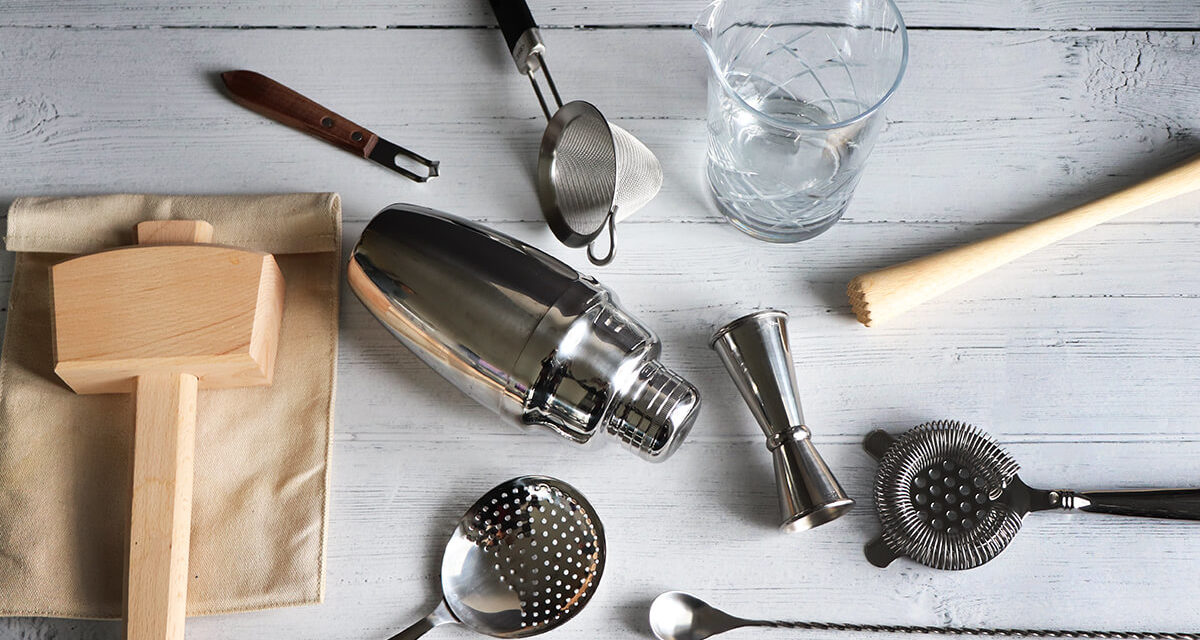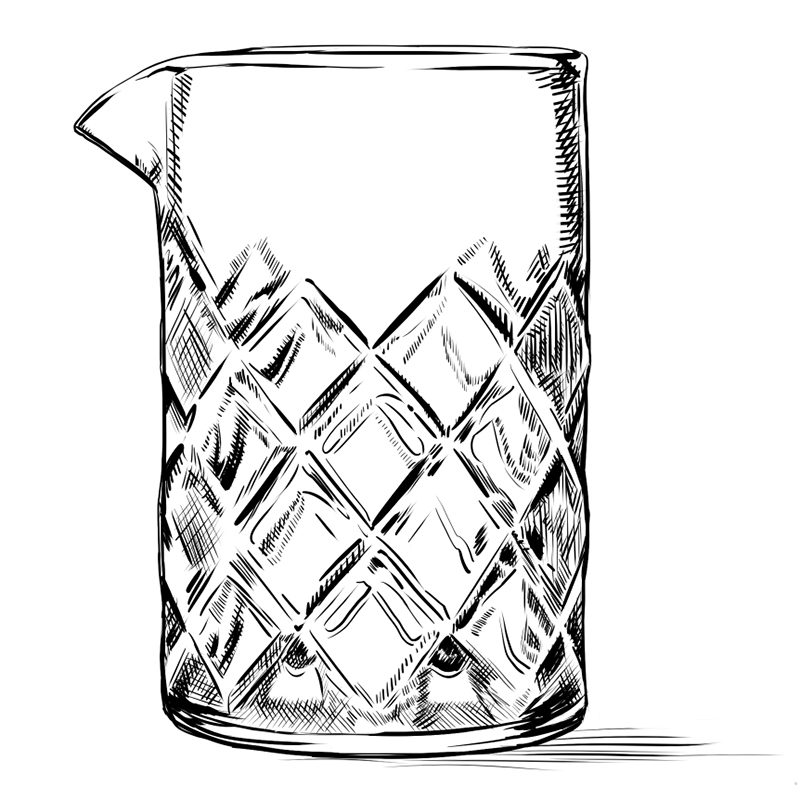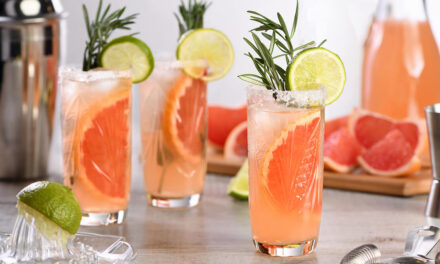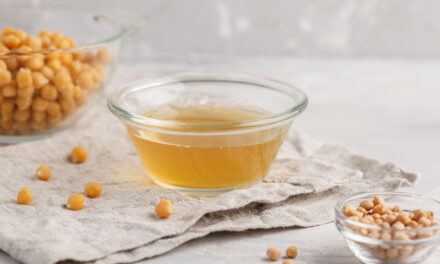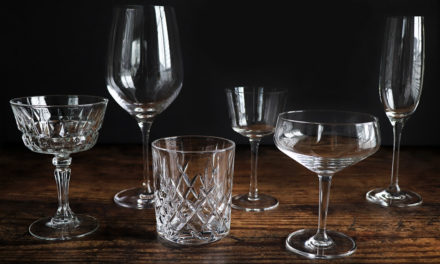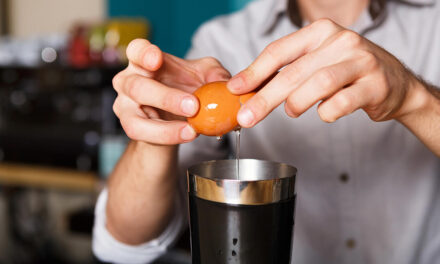This guide is one that we’ve been excited to write for a while. When we first started exploring the world of mixology, we had a hard time finding the tools that we saw being used by the impressive mixologists at our favorite cocktail bars. And with all of the different types of shakers, stirrers, and unconventional gadgets, how would someone new to the hobby know what everything is used for or how to even search for them?
Below, you’ll find a comprehensive list of the most common tools being used by at-home mixologists everywhere. These tools can enhance your mixology experience and make it easier to make your favorite recipes. You will come to find your own preferred tools and techniques, so we recommend that if you’re just starting out, keep things simple by starting small and working your way up as you discover your own style and flow.
Mix & Shake
Mixing Glasses are used for combining ingredients of stirred cocktails. The most important thing to look for in a mixing glass is one that can withstand rapid temperature changes (since you’ll be taking lukewarm alcohol and creating a chilled vortex of ice) and one that can handle some beating if your spoon repeatedly hits the side. For these reasons, a regular pint glass is usable, but not the best option.
Shakers are used for combining ingredients and are commonly used for cocktails that contain citrus juices, creamy liqueurs or dairy products, simple syrup, egg white, or other drink mixers. Shaking will force bubbles to form and create a cloudy appearance at first, so this type of preparation is not ideal for every cocktail type. Click here to read more about which cocktails should be shaken vs. stirred.
Japanese-Style Mixing Glass
We recommend Japanese-Style Mixing Glasses, which have straight sides and a spout to make pouring much easier. And if you needed more convincing, glass is a great insulator and allows you to see the drink as you’re stirring it, which is half the fun. Plus, this will be an impressive addition to your collection and will make you look, and feel, like a professional.
Cobbler Shaker
The Cobbler Shaker features three pieces, including a stainless steel tin cup, a built-in strainer, and a top cap. You’ve seen this one at kitchen stores like Bed Bath and Beyond – this shaker gained popularity in many home bars because of its ease of use and pretty shape on the shelf. Its disadvantages are that the built-in strainer allows for little control compared to a Hawthorne or cone strainer, so you will often end up with little ice chips or herb fragments in your drink. Also, the pressure created inside the tin piece can make it a little difficult to remove the cap. Should this happen, gently tap the cap and cup gently against your counter to loosen.
Shaking Tins
A Shaking Tin is suitable for mixing because it can take a beating, but you’ll lose some visibility of color, etc. of the liquid. Also, metal doesn’t provide as much insulation as glass, so you’ll melt more ice than ideal before the drink gets to a nice chilled temperature. For that reason, we really recommend the Japanese style mixing glass described above. This shaker can also be difficult to open after shaking, so gently tapping can help.
Parisian Shaker
At first glance, this shaker looks a lot like the cobbler, but don’t let the shape fool you. A Parisian Shaker features two metal tins that fit together to create a nice tight seal. While these are not the best for busy bar service because they slow down the process and require two hands, they are a great choice for home bars where you are only shaking one cocktail at a time. We recommend this one as it is the best of best worlds.
Stir & Muddle
Barspoon
Barspoons are for stirring cocktail ingredients. A good mixing spoon is made longer than a traditional soup spoon to allow you to quickly stir to chill the liquid without adding any bubbles (as is the case with a shaker). You’ll want to look for one that is forged from a single piece of stainless steel, around 8-15 inches long, and a nice, heavy weight. As a beginner, you may wish to start with a smooth, straight shaft (untwisted) to help you adjust to the method without letting the spoon twirl in your hand, but ultimately you will want to graduate to a spoon with a tight spiral twist that moves up the shaft, because it produces less resistance in the glass.
Muddler
Muddlers are used for smashing and extracting juices from fruits or herbs. Traditional muddlers are made of wood and can look pretty sexy on display at your home bar. But while they’re very pretty, they can’t be put in the dishwasher, and can lose their varnish after significant use. Many bartenders instead opt for a Stainless Plus Plastic muddler, which features a stainless steel handle and a hard flat black plastic bottom with sharp pointed ends. These allow you to really dig into the citrus peels and mash up ingredients, and most can be thrown it into the dishwasher when you’re all done.
Swizzle Stick
You may have seen your favorite mixologist performing some voodoo action involving spinning a stick between their hands. That was likely the result of a Swizzle Stick, which is used to make cocktails with crushed ice, such as rum-based tiki drinks or juleps, which can be difficult to stir with other types of spoons. Many professional mixologists use swizzle sticks made from real wood, but we’ve found just as much luck using ones made from stainless steel. The key is to make sure the diameter of the swizzle fits inside whatever glass you plan to serve in.
Measure & Pour
Jigger
One option is to use a Jigger, which vary in size and feature different measurements on each side. If you go this route, we recommend that you acquire two jiggers. The first is a combined 2 oz. and 1 oz. jigger, and the second is a 1/2 oz. and 3/4 oz. jigger. With these, you fill one side of the jigger to the top to measure and immediately pour into a mixing glass or shaker.
Julep Strainer
Julep Strainers are bowl-shaped and work best for straining stirred mixed drinks because they fit strategically inside a mixing glass. The small holes in the strainer allow the liquid to pass through while holding back the ice, keeping the cocktail from forming any bubbles. Look for one that fits inside your mixing glass without leaving any gaps, and you’ll be golden.
Hawthorn Strainer
If you only buy one strainer, it should be a Hawthorne Strainer. This strainer works best for straining shaken drinks because it features a flat round surface with a spring coil that fits neatly inside a shaker. The most important thing to look for in a Hawthorne strainer is one that has a diameter that fits over your shaker without any gaps, and a tight coil that will self-adjust to hold the strainer in place. The Hawthorne strainer is most ideal for shaken cocktails because the coil helps produce a nice foamy top, but it may also be used for stirred cocktails.
Cone Strainer
Cone Strainers are essential for drinks that need to be double-strained to filter out tiny particles, such as those with muddled fruit or herbs, and ice fragments that you don’t want to end up making their way into the drink. You may have seen these at a kitchen hardware store, but those especially made for cocktails feature a cone shape that helps direct the liquid into the glass.
Dasher Bottle
Dasher bottles are used for pouring small and precise liquid amounts, as needed for bitters or tinctures where you measure in terms of “dashes.” These are also great for helping your bar look more uniform if you tend to use ingredients from different brands or can be used to store your own homemade concoctions.
Juice, Ice, & Garnish
Citrus Juicer
Assuming you have no other access to fresh citrus juice, a citrus press is your best option for producing fresh juices from lemons, limes, oranges, grapefruits, etc. We recommend using one that is either stainless steel or at least one not covered in enamel which can chip over time and can leave you with unintentional debris in your cocktails.
Lewis Ice Bag & Mallet
Made of canvas, the Lewis bag is the best way to crush ice. After loading the bag with ice cubes, you give the bag a couple big whacks to break them into smaller chunks for cocktails like juleps and mules. The canvas bag doesn’t tear upon impact like plastic often does, and the wooden mallet makes for a larger surface area for pounding.
Citrus Peeler
Peelers work great for carving the citrus peel away from the white bitter rind. Peeling fruit works wonderfully as a garnish or muddled ingredient in many cocktails. While a pairing knife will create a nice peel, it can be dangerous if you try to “drink and peel” like we often do. We recommend a Y-shape vegetable peeler that will take off the fruity outside while leaving the bitter parts behind.
Channel Peeler
Channel peelers have a tiny U-shaped sharp edge that allows you to pull the peel away from the pith of citrus fruits in long, thin, beautiful strands. If your drink calls for a citrus twist, this gadget will do the trick.

